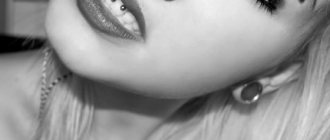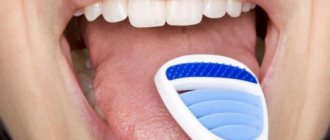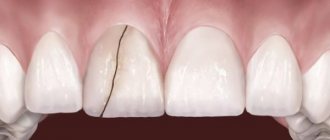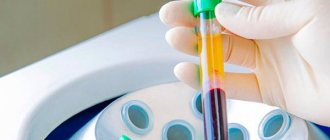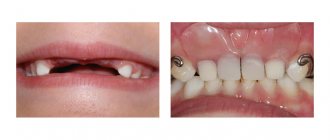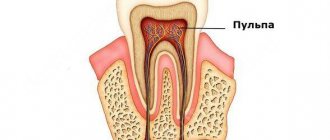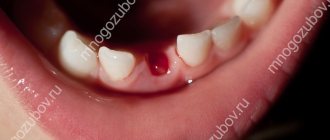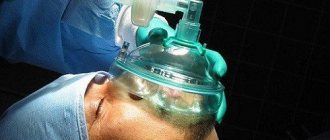This article will talk about piercing: piercing, wearing jewelry, places where it can be done. The article is for informational purposes and is addressed to the masses who are seriously thinking about such action on their appearance. However, it is worth understanding that this procedure cannot pass without a trace; rather, on the contrary, its impact on future life is very great. Since we live in a society, the opinions of the people around us have a certain meaning. Some people like piercings, others are indifferent to them, and others simply do not understand such “beauty” and do not perceive people who have them very well.
Most often, the desire to get a piercing arises among young people. For them, this is a way of self-expression and emphasizing their individuality. By taking this step, they seem to be challenging society. In addition, many Hollywood stars, whom teenagers have always sought to imitate, often use the services of a piercer. That's all true, but you should think more than a thousand times before you finally make a decision. To do this, you need to weigh the pros and cons and find out as much information as possible about the procedure.
It should be said that recently, among famous personalities, few have decided to take such a responsible step. But really, the procedure has a high degree of risk, so you will even have to consult with your parents (if you are under 18 years old), and only then go to the specialist.
Piercing is the piercing of skin tissue in certain areas of the body for subsequent wearing of jewelry. The procedure itself resembles a small operation. Indeed, the master, like a surgeon, pierces the body with special piercing equipment , interfering with its usual state. A good specialist even has antiseptics, painkillers, bandages, cotton wool and much more in case he helps the patient.
The cost of such a service depends on the type of salon and the professionalism of the specialist, but, in general, it is difficult to call it cheap.
Causes of complications
The main reason for unforeseen situations during the procedure is the penetration of an infectious agent into the wound surface. And if infection occurs, it is accompanied by symptoms indicating intoxication of the body.
Complications often arise in those people who decided to save money and got a puncture done at home or by a specialist without the appropriate permits.
Sterility during piercing can only be maintained in a clinic or stationary beauty salon.
In addition, the master must use only disposable tools and have documents confirming that he does not have dangerous infectious diseases.
An unsuccessful puncture can lead to damage to blood vessels and nerves - another reason for the development of complications. For example, when an eyebrow is pierced, damage to the facial nerves can occur, which, if left untreated, can lead to their paralysis.
Often, the clients of beauty salons themselves are to blame for the fact that a complication has developed after a piercing. They do not adhere to the rules of conduct during the recovery period.
We recommend reading about tongue piercing. You will learn about the types of punctures, jewelry, the pros and cons of a hole in this area, the procedure for performing the procedure, and possible consequences. And here is more information about how the navel is pierced and the possible consequences afterwards.
Real negative consequences after piercing
If you decide to decorate your body with an earring, you should familiarize yourself in advance with possible complications after the procedure.
Language
When the tongue is pierced, the following unpleasant consequences are most often noted:
- problems chewing solid foods;
- damage to tooth enamel;
- speech disorder;
- sleep disturbance (insomnia).
To see what complications may arise after a tongue piercing, watch this video:
Eyebrow
If the piercing is done on the eyebrows, then damage to the eye or facial nerve is possible. In the first case, there is a high probability of deterioration in visual acuity, in the second - the development of facial nerve paralysis. Often, eyebrow piercing is accompanied by the formation of an extensive hematoma.
Complications after eyebrow, ear and tongue piercings
Private parts of the body
Quite often, nipples and certain places in the intimate area are pierced. This procedure is often accompanied by the development of inflammation at the puncture site. In the future, problems with sexual life may arise: the sensitivity of the nipples decreases, jewelry in the clitoris or foreskin causes pain during sexual intercourse and makes it impossible to use a condom as a contraceptive.
Lips, cheeks
If the jewelry is installed in the lip, then it is almost impossible to avoid infection of the wound: fragments of food and various liquids, sweat and dust, saliva constantly get into the wound. The same complication is often noted when the cheek is pierced.
Nose
Nose piercing is considered the simplest and safest procedure of all. But even such a puncture can be complicated by infection of the wound surface and a progressive inflammatory process.
Coccyx
Piercings on the tailbone are rarely done, but if such a piercing already exists, then you should be wary of infection of the wound, loss of sensitivity in this area and damage to nerve endings.
Are common
Regardless of where the piercing is done, infection with AIDS, herpetic virus, and hepatitis can occur. In addition, with an incorrectly made puncture or ill-chosen jewelry, a patch of connective tissue can form. In this case, the jewelry will have to be removed, and a keloid scar will form at the piercing site.
The first signs of complications after piercing:
- redness at the puncture site;
- pain, itching and feeling of heat;
- increase in general body temperature;
- purulent discharge from under the jewelry.
The appearance of these symptoms is a reason to visit a doctor. If left untreated, infection and inflammation can develop into sepsis, a pathology that is characterized by rapid development and often ends in the death of a person.
About piercing, complications and their prevention, watch this video:
Should I get a piercing?
Today on the “Beautiful and Successful” website we will talk about piercings.
If earlier this method of body decoration was symbolic and practical, today it is one of the most fashionable trends in body art:
piercing helps “express yourself and stand out from the crowd”, “it’s original and exotic”, “gives your appearance beauty and uniqueness” - this is what those who have no doubt about getting piercing say in reviews?
Popularity of piercing
The history of “body punctures”—that’s how “piercing” is literally translated from English—goes back thousands of years: bone needles used to make a puncture were replaced by thin laser-sharpened steel ones; simple rings were replaced by decorative ornaments of various shapes made of biocompatible materials with various coatings.
Initially, in ancient times, it was mainly men who pierced the body.
Roman centurions pierced the nipple not only as a sign of courage, as some sources indicate, but also for practical purposes - a cloak was threaded through the rings inserted into the nipple, that is, the piercing supported the cape of a Roman soldier. Egyptians wore piercings to confirm their social status.
and the sailors made punctures on their bodies and put on expensive jewelry so that in the event of their death there would be money for the funeral.
I would like to immediately note that from a medical point of view, piercing, the consequences of which can be unpredictable, refers to surgical intervention
into the body, so those who are in doubt about whether to get body piercings need to weigh the pros and cons.
One in ten adults aged 16 to 24 have a piercing, according to a study conducted by a health agency in England. The popularity of different areas for piercing is as follows:
- Navel – 33%
- Nose wings – 19%
- Language – 9%
- Nipple – 9%
- Eyebrows – 8%
- Guba – 4%
- Genitals – 2%
Also, according to the same study, 31% of home piercing enthusiasts experienced complications: infection of the puncture site and bleeding.
Therefore, if you are deciding whether to do a piercing at home or turn to specialists, the answer is clear - piercing should be performed by professional piercers, not amateurs.
Does it hurt to get a piercing?
The procedure, which allows you to embellish your body, is carried out in a matter of minutes. Whether it hurts or not largely depends on your sensitivity threshold.
. One way or another, you may be offered pain relief in any case. The most commonly used are ultracaine and lidocaine.
Do not forget that these anesthetics can cause allergies, so it is better to do a test injection before the procedure.
In salons, master piercers work in sterile gloves and perform piercings with special piercing tools—the negative consequences of the procedure are reduced to a minimum.
- The master uses a felt-tip pen to mark the point where the puncture will be made.
- If necessary, local anesthesia is given.
- Using a clamp, a fold is formed on the skin. This slightly numbs the area where the piercing will be done, and also ensures that you will not get a superficial piercing. Depending on the location of the puncture, its diameter, and the thickness of the fold, the clamps are selected individually.
- The puncture itself is made with special needles for about 30 seconds. After which the clamps are removed.
- A medical earring of a convenient shape is threaded into the hole.
- The final stage is treating the piercing site with antibacterial agents. When the navel, eyebrow and nipple are pierced, a protective bandage is applied.
For piercing, specialists use special laser-sharpened needles, catheter needles of different diameters, and reusable or disposable pistols.
- Pistols
are used to pierce the earlobe (by the way, the most common type of body piercing, which few people associate with piercing). But for piercings on other parts of the body, guns are not recommended. They are made of plastic and are not subject to chemical or thermal sterilization. - Laser
piercing needles are used only once. Unlike simple needles, they are hollow inside: they pierce the skin, and they also serve as a channel for threading jewelry. Once again we draw the attention of our readers that needles should be disposable and not disinfected. - Catheter needles
contain a plastic tube inside, which remains at the puncture site for a while and jewelry is threaded through it. This needle is convenient to use if you have chosen a piercing jewelry of a unique shape.
Piercing jewelry
It will not be difficult for you to choose jewelry for piercing: all kinds of barbells, bananas, rings, balls, nostrils - the main thing is that they are made of biocompatible materials:
- Implant steel, which, unlike surgical tool steel, does not contain allergens.
- Titanium. The most affordable and popular material for jewelry. It contains no allergens and is very light.
- Special plastic (PTFE). This is a hypoallergenic material. It suits everyone. It is used during pregnancy when the navel is pierced, since plastic jewelry easily takes the shape of the body.
- Gold 750 and above.
Stainless steel and 14k gold are alloys, they can oxidize in the body and cause negative effects of body piercing.
Interesting facts and reviews
- Since navel piercing today occupies a leading position among all types of body modification, and many are considering whether to get a navel piercing, we invite you to familiarize yourself with an interesting fact: the navel connects all the energy channels that exist in the body.
A navel piercing (puncture) breaks them; the energy does not disperse throughout the body, but is concentrated in the area of the gap, that is, in the navel area. It was for this purpose that the navels of concubines in harems were pierced: sexuality among female slaves prevailed over spiritual needs. - According to American experts, oral piercing in the future can provoke complications such as tooth loss:
rings and rods in the lips put pressure on the neck of the base of the tooth, the gums recede, and the tooth is not fixed so firmly, which leads to its loss. - Those who are thinking about whether to get a tongue piercing, studying reviews, should take into account that often people with tongue piercings involuntarily play with jewelry. Often such harmless fun becomes a reflex, and the consequences of tongue piercing can be disastrous.
This is mentioned in some reviews.
- I constantly played with the piercing on my tongue: I stuck it in the hollow between my teeth. Over time, a visible gap appeared between the teeth.
I had it repaired at the clinic. The treatment was more expensive than the piercing and decoration itself. Galina - I started getting piercings when I was 14 years old. It was the eyebrow that hurt the most. In addition, I constantly touched the jewelry with either my sweater sleeve or my comb. By the age of 22, I was burned out by it all. I removed the piercing from my face. But I still have the scars.
I don't think they will completely overgrow. So, if you are in doubt about whether to get a facial piercing, I will say this: do not pierce anything on your face if you do not want to disfigure yourself for life. Ejuska.
Methods for getting rid of piercing complications
If there are signs of inflammation at the puncture site, then some measures can be taken to stop the process:
- Wiping the puncture site with an alcohol solution.
A cotton swab soaked in any antiseptic - Chlorhexidine or Furacilin - should be applied to the puncture site twice a day. You can wash the wound with the same solutions, and then apply a gauze pad with Levomikol or Tetracycline ointment. - A day 2-3 times you need to wipe the piercing site with a cotton swab dipped in hydrogen peroxide. In this way, you can remove the crusts without damaging the skin and prevent infection of the wound.
- If a small lump appears after the wound has healed (it feels like a ball under your fingers), you need to massage it. But this procedure is allowed to be performed only after complete healing of the wound and in the absence of symptoms of inflammation. Before each kneading of the seal, you need to remove the jewelry and lubricate the puncture site with baby cream. After the procedure, the area is wiped with hydrogen peroxide.
In some cases, complications from piercing are so serious that home treatments cannot solve the problem. For example, the formation of keloid scars requires surgical treatment. Doctors can use cryodestruction, perform an operation to excise connective tissue, prescribe sessions of phonophoresis or laser therapy.
Most often, several types of medical procedures are used to eliminate complications, which increases the chances of obtaining a positive effect. Unfortunately, it is not possible to completely get rid of keloid scars; traces of their “presence” still remain.
We recommend reading about eyebrow piercing. You will learn about the types of punctures in this area, jewelry, contraindications to the procedure, methods of performing the procedure, and skin care after. And here is more about the unusual otoplasty - elf ears.
What not to do for the first 30 days
- Do not take out the jewelry and do not touch the piercing again.
- Don't get it wet! No lakes or swimming pools. Solarium and sauna are also prohibited. In general, almost like Brodsky: “Don’t leave the room, don’t make a mistake.”
- Do not treat with peroxide or alcohol. They will only burn your skin.
- Do not apply ointments, creams or other chemicals to the puncture site.
- Don't drink alcohol. It greatly slows down healing. Put away a bottle of Pinot Noir until better times.
- Don't wear tight clothes. The puncture site should not come into contact with it. Wear something looser.
How to avoid complications
To avoid complications after puncture and installation of jewelry, you should follow the following rules:
- Perform the procedure only in specialized clinics or offices, having familiarized yourself with the working conditions of the master and the permits for conducting such activities.
- After the puncture, do not visit baths and saunas, public swimming pools and open reservoirs for 2 - 3 months, do not take a bath, and limit yourself to a shower.
- Every day after the procedure, treat the wound with Chlorhexidine or Miramistin until it is completely healed.
- If you have your tongue pierced, you should rinse your mouth after every meal and drink.
- Do not touch or twist the jewelry until the wound is completely healed.
- Before getting a piercing, visit a therapist and undergo an examination. There are a number of contraindications to the procedure in question:
- diabetes;
- periods of pregnancy and breastfeeding;
- AIDS or HIV infection;
- viral hepatitis;
- malignant neoplasms;
- herpetic infection;
- any psycho-emotional disorders;
- epilepsy even in the absence of active seizures for a long time.
Piercing is a procedure with a high probability of complications. They can be completely avoided if you follow the rules of behavior during the recovery period and have the procedure done in specialized institutions.
Similar articles
- Navel piercing - a piercing for the sake of beauty or a risk for...
A professional should make a piercing for a navel piercing. He uses a needle, catheter or gun. There are lower and double navel piercings. How is the puncture site treated, pregnancy with piercing? Read more - Getting a tongue piercing: pros and cons, how to do it...
If a person decides to get a tongue or frenulum piercing, then he should think twice about his step and find out the nuances, pros and cons of the procedure, as well as how to care after and the consequences of the step. What types of tongue and frenulum piercings are there? Read more
- Dimples on the cheeks: the operation to create them, how it goes...
The operation will make beautiful dimples on your cheeks look natural. There is an option without surgery, but it is temporary. How is plastic surgery to create dimples performed? What is the result before and after? Read more
- Eyebrow piercing: how to make it beautiful for men and women...
If you decide to get an eyebrow piercing, you should also find out the specifics of the procedure, as well as what is better: a horizontal piercing or another, gold or titanium for a barbell, rings. What consequences can there be for men and women? Will there be a scar? Read more
How is it done and how long does tongue piercing take to heal?
Photo from website: youtube.com
First, let's figure out how the procedure itself occurs so that we know in detail what to expect. Thorough preparation is what can guarantee a good result, as well as a proper healing process.
- In the salon, the master must use a special clamp, which has a hole for a puncture.
- He clamps the tongue in a clamp and pierces it using a special sterile needle. Moreover, it is better if the needle is disposable, as there is much less chance of getting an infection, and this is very important.
- Next, the master, through a special hole in the needle itself, inserts the stud bar directly into the tongue, after which both the clamp and the needle are removed.
- After the procedure, you must rinse your mouth with any disinfectant solution. An excellent option would be Chlorhexidine diluted in a ratio of one to four with water.
Photo from website: dental86.ru
Around evening, the tongue will definitely swell and you will have to put up with such inconvenience, as this is inevitable. Healing may occur at different rates in different people, and depending on the quality of the tongue piercing procedure. It can be over in five days, or it can take two weeks to heal. Moreover, for this entire period you will have to completely abandon hot spices, acids, and, in general, solid food. It is also recommended to talk less in the first days, as you can easily injure the wound.
